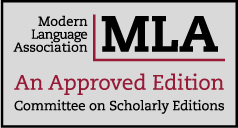Ælfric and his Impact
Around 987, a young monk and priest left the walls of Winchester to set out for his first post.1 Behind him were years of training at one of the finest centers of learning in the land. Before him was the humble abbey of Cerne Abbas in Dorset, newly founded (or refounded) by Æthelmær, pious layman and later ealdorman of the Western Shires. Unknown to him, the years at Cerne and later at Æthelmær’s abbey of Eynsham would see the foundation of an illustrious career, the patronage of bishops and archbishops, and keen interest in his works that would last at least through the early thirteenth century and surge again during England’s Renaissance. For the present, however, he was conscious simply of the weight of a pressing responsibility. Within him, he carried the wealth of centuries of Christian doctrine; around him, he saw a land in grave peril for lack of it. The literary revival that would see its chief flowering in him was approaching to its close; the Danish threat once put to flight by Alfred the Great was even now making ready to topple the Anglo-Saxon royal line; the millennium, with all its ambiguous apocalyptic foreboding, was rapidly drawing nigh; sensationalist, apocryphal works were leading people astray into theological error; and the time of Antichrist, though its day no one might know, was nonetheless certain to come. As Paul the Apostle warned believers long before, the time was short. Unless humans were taught the tenets of the faith, doctrine set down in Scripture and exposited by orthodox authorities, they would be lost. And he, who had been given much, would be held accountable by God.
Ælfric’s view of the bleak peril of the times, the people’s need, and his responsibility as their teacher comes through from the first pages of his early work at Cerne. For the next twenty years—through his appointment as Abbot of Eynsham in Oxfordshire around 10052 to his death there around 10103—he would labor to make the riches of his learning accessible to the uneducated. He eschewed the fashion for arcane vocabulary and developed his own rhythmic, memorable style. He composed a grammar and pedagogical tools to teach students Latin. He translated and paraphrased books of the Old Testament. He wrote on behalf of bishops to instruct their clergy in ecclesiastical matters. He outlined proper liturgical practice for his own monastic community. He provided overviews of world history, treatises on calculating time and its theological implications, discussions about spiritual gifts, warnings against subtle and blatant vices, exhortations to sexual purity, models of saintly behavior, and commentaries on Scripture and on doctrine—all with the practical view of showing people what they needed to know and do for the salvation of their souls.
Ælfric’s work is of scholarly interest for a number of reasons: its roots in the Benedictine Reform, its discriminating approach to source material, its exegetical content, its influential linguistic style, its reappropriation in Elizabethan England, and its authorial transparency. The Benedictine Reform, to begin with, was a movement of which Ælfric was simultaneously a product, a leader, and a outlier.4 Inspired by sweeping changes at continental centers such as Cluny and Fleury, the Reformers transformed the Anglo-Saxon church in the tenth century: they reestablished monastic houses, built up libraries, organized schools, and otherwise addressed themselves to the problem of illiteracy—ignorance, that is, not simply of reading but of the doctrinal heritage to which literacy was the key. For Ælfric in particular, the heart of this wealth was the writings of the Church Fathers, men like Augustine or Jerome or Gregory the Great who had set forth the authoritative teachings of the Church. In the absence of such teachings, Ælfric believed, the alternative was unregulated error—error that would lead to corruption and then to judgment, perhaps meted out (as his colleague Wulfstan the Homilist would poignantly posit) by the return of the Viking sword. Distressed at his contemporaries’ ignorance of basic theology, therefore, and recognizing that few had knowledge of Latin, through a complex process of editing and translation Ælfric sought to make the writings of Church Fathers accessible not only to clergy but, remarkably, to laity as well. In doing so, he both reflected and went beyond his fellow Reformers in his insistence on authoritative sources and simplicity of style.
If Ælfric stood out even among fellow Reformers in his discriminating approach to source material, the difference between him and other contemporaries was stark. The anonymous Blickling and Vercelli homilies, for example, are “texts in which the distinction between orthodox dogma and popular theology is lost sight of behind a dazzling display of rhetoric,” all too often relying on “narratives which were clearly fictitious and in some cases of dubious morality.”5 Ælfric, by contrast, condemns the uncritical acceptance of apocrypha, relying instead on authoritative patristic authors. As he states regarding the Assumption of the Virgin Mary:
Gif we mare secgað . . . þonne we on ðam halgum bocum rædað þe ðurh godes dihte gesette wæron. ðonne beo we ðam dwolmannum gelice. þe be heora agenum dihte oððe be swefnum fela lease gesetnyssa awriton. ac ða geleaffullan lareowas Augustinus. Hieronimus. Gregorius. and gehwilce oðre þurh heora wisdom hi towurpon (Catholic Homilies II.29.119-25).
If we say more . . . than we read in holy books which were composed by God’s direction, then we shall be like those heretics who by their own direction or dreams have written many false narratives. Orthodox teachers, however—Augustine, Jerome, Gregory and many others—in their wisdom have thrown them out.
It was not just for their authority that Ælfric sought reliable sources: often, it was for their exegetical content as well. Exegesis, the systematic interpretation of Scripture, is rare in Anglo-Saxon addresses to the laity; far more common is catechesis, or general moral instruction. The Blickling homilies, for example, reveal but “disjointed and unclear” attempts at exegesis: rather, they are primarily concerned with “the immediate practical problem of convincing their hearers to live moral lives in this world,” being “uninterested or unable to explain points of dogma . . . and to develop intricate exegetical arguments.”6 The Vercelli homilies, too, only occasionally reflect the “elaborate reasoning” of patristic exegesis.7 The sermons of Wulfstan the Homilist may be more orthodox, but they either seek to provide “a central core of Christian teaching designed to instruct priest and laity alike in the essentials of their religion” or “a call to repentance on the part of a sinning people.” In neither case are the sermons exegetical.8 In short, scholars suggest: “Most . . . early medieval English and Latin writers of sermons for the laity contented themselves with general, catechetical addresses.”9 Such an approach, however, contented Ælfric not at all: to be inspired sincerely to live out their faith, he thought, believers needed not sweeping exhortations to virtue but exposure to the theological riches of the Bible. To this end, Ælfric’s first and perhaps foremost works, the Catholic Homilies, are specifically concerned with expositing the Gospel readings of the liturgical year. Of the eighty-five selections therein, while some recount saints’ lives, and some simply expand a scriptural narrative, fifty-six are commentaries on the pericopes that “are indebted either for matter or at least for inspiration to the homiletic and exegetical works of the Church Fathers.”10 The endeavor is remarkable as much for his scope as its approach. Paul the Deacon, fulfilling Charlemagne’s wish for an authoritative homiletic compendium in the eighth century, accomplished much in assembling a collection of patristic works; even he, however, did not weave them together to compose homilies of his own. Ælfric, however, composed multiple series of such homilies for alternating years, covering some sixty-two Sundays and feast days in his first two volumes alone.11 The achievement was a singular one: both in England and on the Continent, “No one before Ælfric or in the century after him produced or attempted to assemble in the vernaculars a coherent set of exegetical commentaries on the pericopes [Scriptural readings] for the Christian year.”12
Ælfric was not content simply to convey sound doctrine, however: he sought to do so memorably through what proved to be an influential linguistic style. Adapting the features of Old English verse, he created a fluid combination of alliteration and rhythm that made his language striking and attractive to later writers. Though Old English was displaced among the ruling class by Anglo-Norman after the Norman Conquest of 1066, and became unreadable over the next three centuries as the vernacular changed, antiquarian writers seeking to recapture “authentically English” literary traditions repeatedly looked to Ælfric as a model. In the late twelfth century, Layamon’s Brut draws directly on Ælfric for its style, and to Ælfric may be indebted the Alliterative Revival of the fourteenth and fifteenth century, when writings such as Sir Gawain and the Green Knight consciously hearkened back to Old English poetic forms. Indeed, though Ælfric’s innovative style has traditionally been labeled “rhythmical prose,” one recent study has recast him as “Anglo-Saxon England’s most prolific poet.”13 Such a perspective both challenges our understanding of Old English genres and positions Ælfric as a dynamic part of larger literary developments in Western Europe.
Posthumous interest in Ælfric did not end with the late Middle Ages, but revived in the Renaissance, with the reappropriation of Ælfric’s theology in Elizabethan England. One of the first serious scholars of Old English was Matthew Parker, Archbishop of Canterbury under Elizabeth I.14 Charged with preserving what he could of the works scattered by Henry VIII’s dissolution of the monasteries, Parker was far more than a collector of books: rather, he was a firm believer in the importance of historic English texts. Parker had a clear reason for this study: he sought to justify the theological positions of the new English Church by means of historical precedent, showing that in departing from Rome the Church was actually remaining true to traditional English belief. One of the central figures Parker found to substantiate his views was Ælfric of Eynsham—a man whose views Parker simultaneously respected, used, distrusted, and denied. Though Parker was aware that Ælfric’s position on certain matters (such as priestly marriage) was diametrically opposed to his own, and though he even acknowledged such differences in print, Parker cited Ælfric as an authority in a way both scrupulously accurate and strikingly out of context. The results are a fascinating interplay of ideas at a key moment in intellectual and theological history.
If historical, literary, and theological reasons were not enough, Ælfric’s works capture scholarly attention through their remarkable authorial transparency. In sharp contrast to most of Old English literature, where we do well to know the author’s name, Ælfric is a self-conscious writer who provides insight into his pedagogical struggles and concerns. He agonizes over the extent to which he should convey complex material to his unlearned audience, worries about their attention span, is sensitive to cultural differences that may prove confusing, considers how they may react to expositions of the Old Testament, and ponders the implications of translating Scripture into the vernacular. From his pages emerges not a faceless or faraway figure, but a human being who cares genuinely for the needs of those around him.
The young monk who left the walls of Winchester for humble service at Cerne Abbas had no idea of where his work would lead. He only felt a burden to use his training on behalf of others. Shaped by the Benedictine Reform, he would set himself to address illiteracy and doctrinal ignorance. Committed to authoritative sources, he would weave together teaching from some of the greatest minds of the Church. Passionate about the Bible, he would create collections of exegetical homilies to explain Scripture throughout the year. Wanting truths to be remembered, he crafted a rhythmical prose style that would be widely influential. Relevant six centuries later, he would play a role in the theological development of the nascent Anglican Church. Transparent about his concerns, he would stand out strikingly as an accessible, flesh-and-blood figure from an age of widespread anonymity. In the process, he would affirm the suitability of the English language as a vehicle for complex theological exposition; manifest the Anglo-Saxons’ ability to digest, transform, and export intellectual traditions inherited from abroad; and serve as a crucial bridge not only between late Antiquity and the Old English period, but between the tenth-century Reform and the sixteenth-century Renaissance.
Nowhere, perhaps, are all these factors seen than in the crown of his corpus, the Catholic Homilies, the heart of which is edited here in The Digital Ælfric.
- ↑ Substantial work has been done on Ælfric’s career and the corpus of his writings. For overviews of his life, see Joyce Hill, “Ælfric: His Life and Works,” in A Companion to Ælfric, ed. Hugh Magennis and Mary Swan (Boston: Brill, 2009), pp. 35–65; Peter Clemoes, “Ælfric,” in Continuations and Beginnings: Studies in Old English Literature, ed. Eric G. Stanley (London: Nelson, 1966), pp. 176–209; James Hurt, Ælfric (New York: Twayne Publishers, 1972); and Jonathan Wilcox’s introduction to his Ælfric’s Prefaces (Durham: Durham Medieval Texts, 1994), as well as the entries by Malcolm Godden, “Ælfric of Eynsham (c. 950 – c. 1010),” in The Blackwell Encyclopedia of Anglo-Saxon England, ed. Michael Lapidge et al. (Oxford: Blackwell, 1999), pp. 8–9; and Theodore Leinbaugh, “Ælfric (ca. 945 – ca. 1015),” in Medieval England: An Encyclopedia, ed. Paul E. Szarmach, M. Teresa Tavormina, and Joel Thomas Rosenthal (New York: Routledge, 1998), pp. 4–7. On Ælfric’s works, see Clemoes, “The Chronology of Ælfric’s Works,” in Old English Prose: Basic Readings, ed. Paul E. Szarmach (London: Garland, 2000), pp. 29–72; John C. Pope, “Introduction,” in his Homilies of Ælfric: A Supplementary Collection, 2 vols. (London: Oxford UP, 1967–1968), pp. 136–45; and now Kleist, “Ælfric’s Corpus” (forthcoming in A Word for All Seasons).
- ↑ To be precise, later in the period between 1002, when Wulfstan the Homilist became Archbishop of York, and 16 November 2005, the death of Ælfric, Archbishop of Canterbury.
- ↑ The death of Æthelwold II “the Younger,” bishop of Winchester, between 1012 and the first half of 1013 (possibly before late summer) provides the terminus ante quem for the death of Ælfric, given Ælfric’s dedication to the bishop of one of his late works (see Bruno Assmann, Angelsächsischen Homilien und Heiligenleben. Bibliothek der angelsächsischen Prosa 13 [Kassel: Wigand, 1889], p. 49).
- ↑ For general studies of the Benedictine Reform, see Mechthild Gretsch, The Intellectual Foundations of the English Benedictine Reform (Cambridge: Cambridge UP, 1999); David Parsons, Tenth-Century Studies: Essays in Commemoration of the Millennium of the Council of Winchester and Regularis Concordia (London: Phillimore, 1975); Barbara A. Yorke, Bishop Æthelwold: His Career and Influence (Woodbridge, Suffolk: Boydell, 1988); Nigel Ramsay, Margaret Sparks, and Tim Tatton-Brown, eds., St. Dunstan: His Life, Times and Cult (Woodbridge: Boydell Press, 1992); and Nicholas Brooks and Catherine Cubitt, eds., St. Oswald of Worcester: Life and Influence (London: Leicester UP, 1996).
- ↑ Clemoes, “Ælfric,” p. 184; Malcolm Godden, “Ælfric and the Vernacular Prose Tradition,” in Paul E. Szarmach and Bernard F. Huppé, The Old English Homily and its Backgrounds (Albany, NY: State U of New York P, 1978), pp. 99–117, at p. 102.
- ↑ Marcia A. Dalbey, “Themes and Techniques in the Blickling Lenten Homilies,” in The Old English Homily, pp. 221–39, at p. 221.
- ↑ Lewis E .Nicholson, ed., The Vercelli Book Homilies: Translations from the Anglo-Saxon (Lanham, MD: UP of America, 1991), pp. 2, 5, and 9.
- ↑ Dorothy Bethurum, “Wulfstan,” in Continuations and Beginnings, pp. 210–46, at p. 216.
- ↑ Milton Gatch, “The Achievement of Ælfric and His Colleagues in European Perspective,” in The Old English Homily and Its Backgrounds, pp. 43–73, at p. 44.
- ↑ Cyril L. Smetana, “Ælfric and the Early Medieval Homiliary,” Traditio 15 (1959), pp. 163–204, at p. 181.
- ↑ On Ælfric’s subsequent reworking of and additions to this material, see Clemoes, “Chronology,” and “Introduction,” in his Ælfric’s Catholic Homilies: The First Series, Text (Oxford: Oxford UP, 1997); and Godden, “Introduction,” in his Ælfric’s Catholic Homilies: The Second Series, Text (London: Oxford UP, 1979).
- ↑ Gatch, “The Achievement of Ælfric,” p. 60.
- ↑ Thomas A. Bredehoft, “Ælfric and Late Old English Verse,” Anglo-Saxon England 33 (2005), pp. 77–107.
- ↑ Key studies of the work by Parker and his associates on Anglo-Saxon manuscripts include Timothy Graham, “The Beginnings of Old English Studies: Evidence from the Manuscripts of Matthew Parker,” in Back to the Manuscripts: Papers from the Symposium “The Integrated Approach to Manuscript Studies: A New Horizon” Held at the Eighth General Meeting of the Japan Society for Medieval English Studies, Tokyo, December 1992, ed. Shuji Sato (Toyko, 1997), pp. 29–50, and R. I. Page, Matthew Parker and his Books: Sandars Lectures in Bibliography Delivered on 14, 16, and 18 May 1990 at the University of Cambridge (Kalamazoo, MI: Medieval Institute Publications, 1993).
 Introduction
Introduction Image Library
Image Library